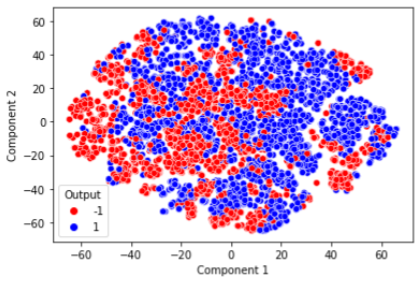Phishing website analysis and detection using Machine Learning
DOI:
https://doi.org/10.18201/ijisae.2022.262Keywords:
Cybersecurity, Phishing, K-Nearest Neighbour, Support Vector Machine , Artificial Neural Network, Decision Tree, Random Forest, Logsitic Regression, Max Vote ClassifierAbstract
Cybersecurity has become an essential part of this new digital age with more than 820 million users of internet by the year 2022 there is need of security systems to protect public from phishing scams as it not only effects the wealth but also effects the mental health of public, making people afraid to surf or use the internet services which motivates me to work on this problem to develop efficient solution. Objective of this paper is to analyze some common attributes shown by phishing websites and develop a model to detect these websites. Various models where trained on the dataset like Random Forest Classifier, Decision Tree Classifier, Logistic Regression, K Nearest Neighbors, Artificial Neural Networks and Max Vote Classifier of Random Forest, Artificial Neural Networks and K Nearest Neighbors. Highest accuracy was achieved by Max Vote Classifier of Random Forest (max depth 16), Decision Tree (max depth 18) and Artificial Neural Network of 97.73%. This research can be used in real life by implementing a web application in which user can enter the website link and using the link the application will get values for various factor on which model was trained and it will detect whether a website is phishing website or not.
Downloads
References
Patil S, Dhage S. A methodical overview on phishing detection along with an organized way to construct an anti-phishing framework. In: 2019 5th International Conference on Advanced Computing & Communication Systems (ICACCS). IEEE; 2019. p. 588–93.
Geng G-G, Yan Z-W, Zeng Y, Jin X-B. RRPhish: Anti-phishing via mining brand resources request. In: 2018 IEEE International Conference on Consumer Electronics (ICCE). IEEE; 2018. p. 1–2.
Pratiwi ME, Lorosae TA, Wibowo FW. Phishing site detection analysis using artificial neural network. J Phys Conf Ser. 2018; 1140:012048.
Oza Pranali P., Upadhyay D, Gujarat Technological University. Review on phishing sites detection techniques. Int J Eng Res Technol (Ahmedabad) [Internet]. 2020 [cited 2021 Aug 10];V9(04). Available from: https://www.ijert.org/review-on-phishing-sites-detection-techniques
Alkhalil Z, Hewage C, Nawaf L, Khan I. Phishing attacks: A recent comprehensive study and a new anatomy. Front Comput Sci [Internet]. 2021;3. Available from: http://dx.doi.org/10.3389/fcomp.2021.563060
Jain AK, Gupta BB. A novel approach to protect against phishing attacks at client side using auto-updated white-list. EURASIP J Multimed Inf Secur [Internet]. 2016;2016(1). Available from: http://dx.doi.org/10.1186/s13635-016-0034-3
Patil NM, Dias SP, Dcunha AA, Dodti RJ. Hybrid phishing site detection. Int j adv sci technol. 2020;29(6s):2452–9.
Harinahalli Lokesh G, BoreGowda G. Phishing website detection based on effective machine learning approach. J cyber secur technol. 2021;5(1):1–14.
Jain AK, Gupta BB. Phishing detection: Analysis of visual similarity-based approaches. Secur Commun Netw. 2017; 2017:1–20.
UCI machine learning repository: Phishing websites data set [Internet]. Uci.edu. [cited 2021 Aug 10]. Available from: https://archive.ics.uci.edu/ml/datasets/phishing+websites

Downloads
Published
How to Cite
Issue
Section
License
Copyright (c) 2022 Ameya Chawla

This work is licensed under a Creative Commons Attribution-ShareAlike 4.0 International License.
All papers should be submitted electronically. All submitted manuscripts must be original work that is not under submission at another journal or under consideration for publication in another form, such as a monograph or chapter of a book. Authors of submitted papers are obligated not to submit their paper for publication elsewhere until an editorial decision is rendered on their submission. Further, authors of accepted papers are prohibited from publishing the results in other publications that appear before the paper is published in the Journal unless they receive approval for doing so from the Editor-In-Chief.
IJISAE open access articles are licensed under a Creative Commons Attribution-ShareAlike 4.0 International License. This license lets the audience to give appropriate credit, provide a link to the license, and indicate if changes were made and if they remix, transform, or build upon the material, they must distribute contributions under the same license as the original.









